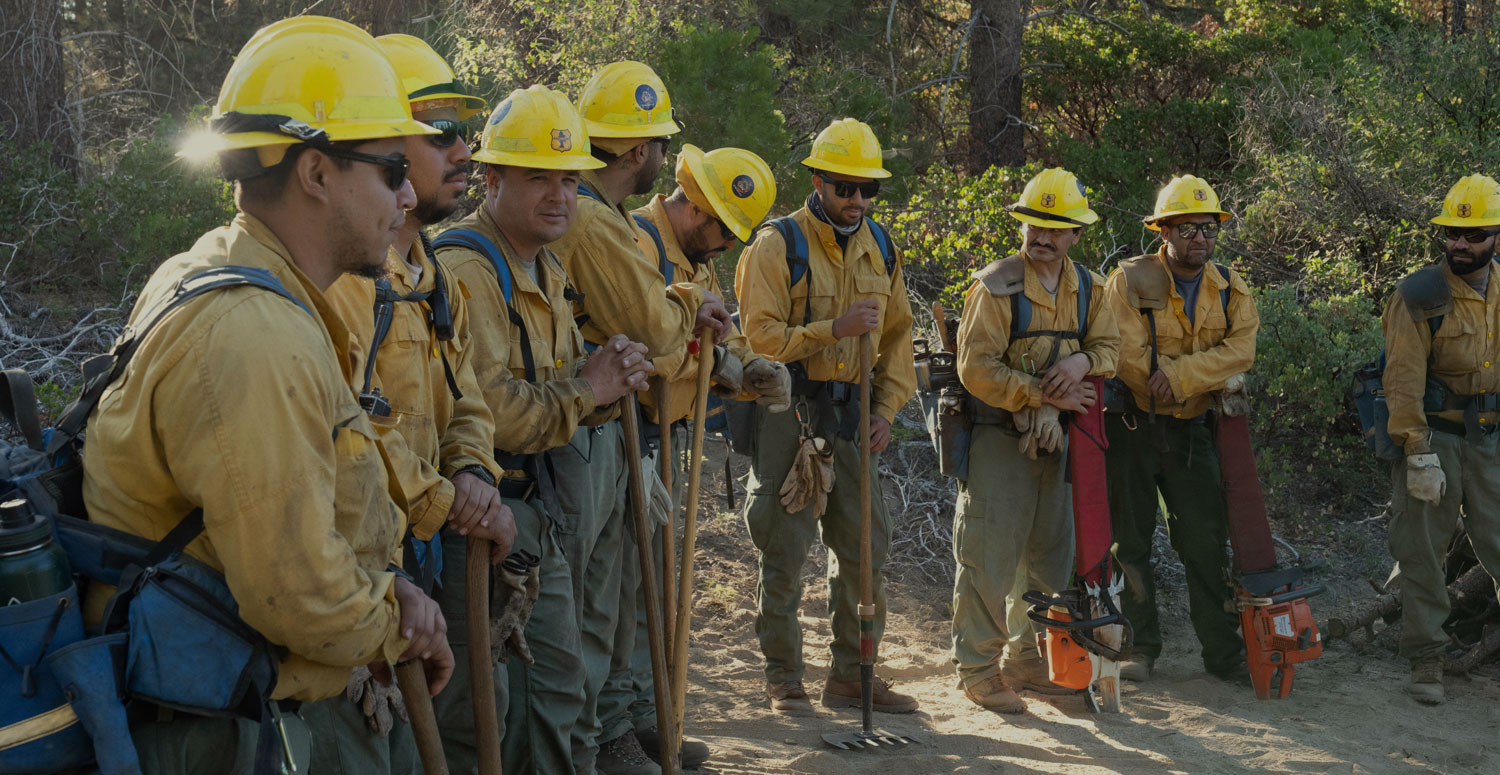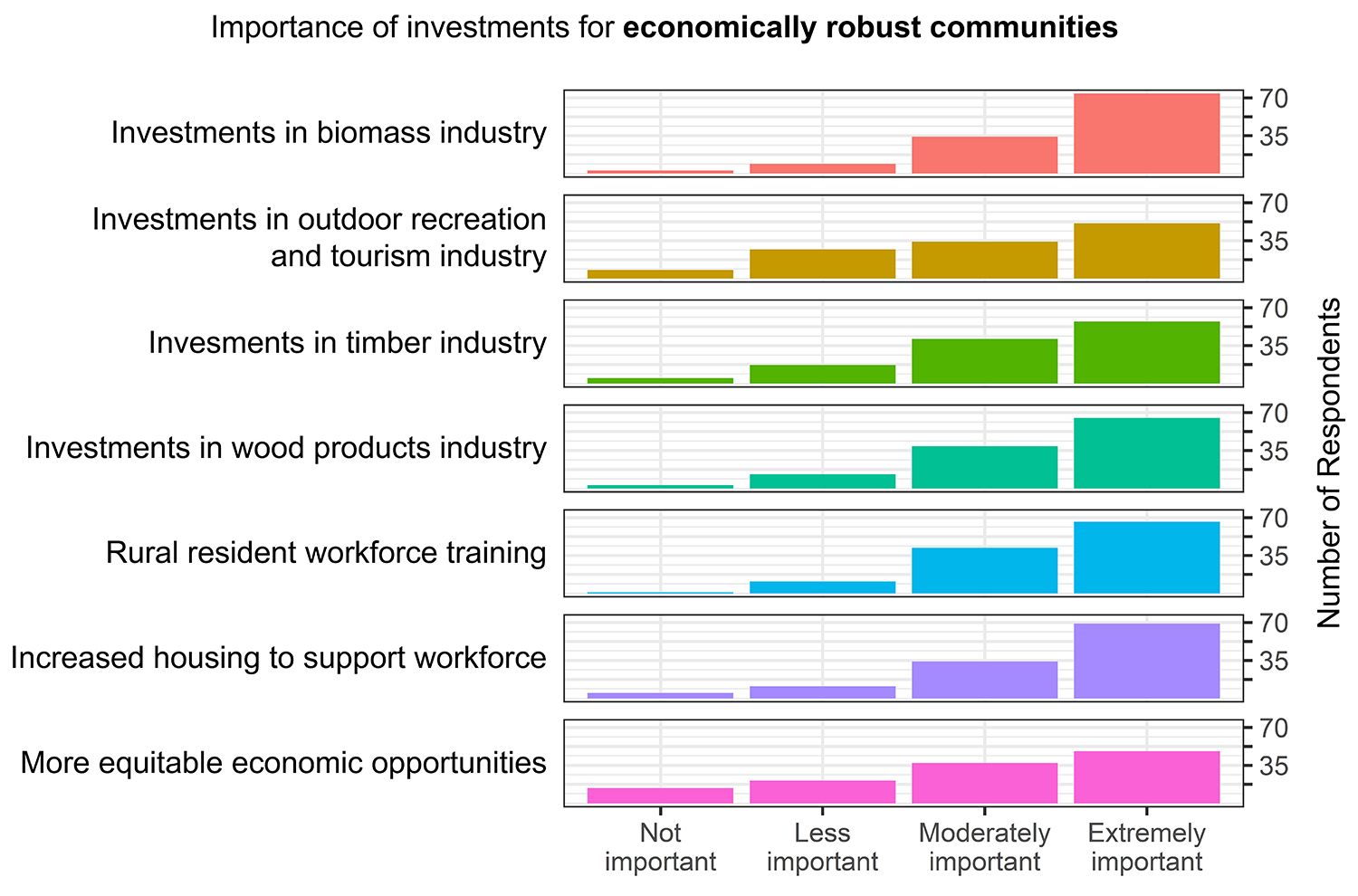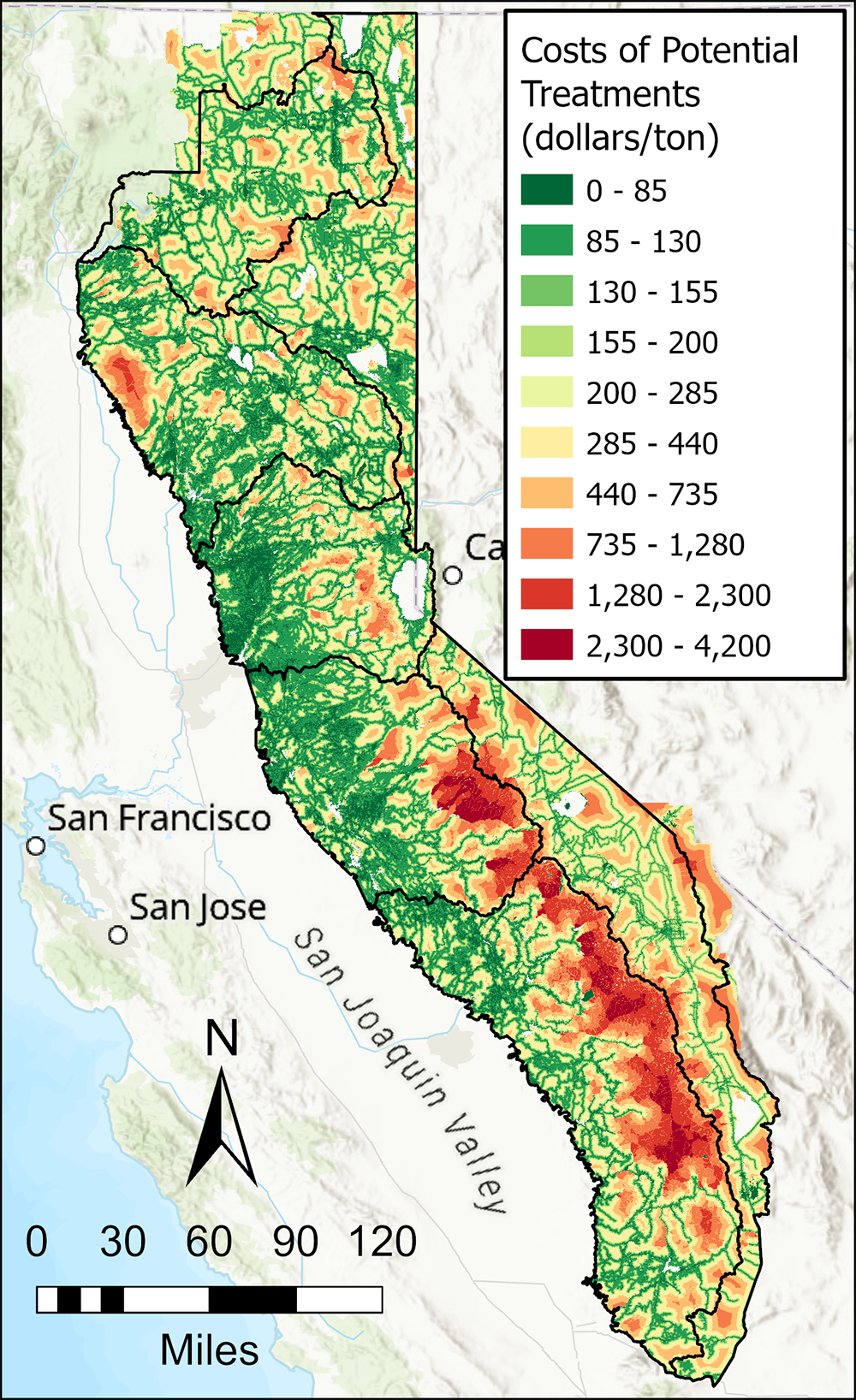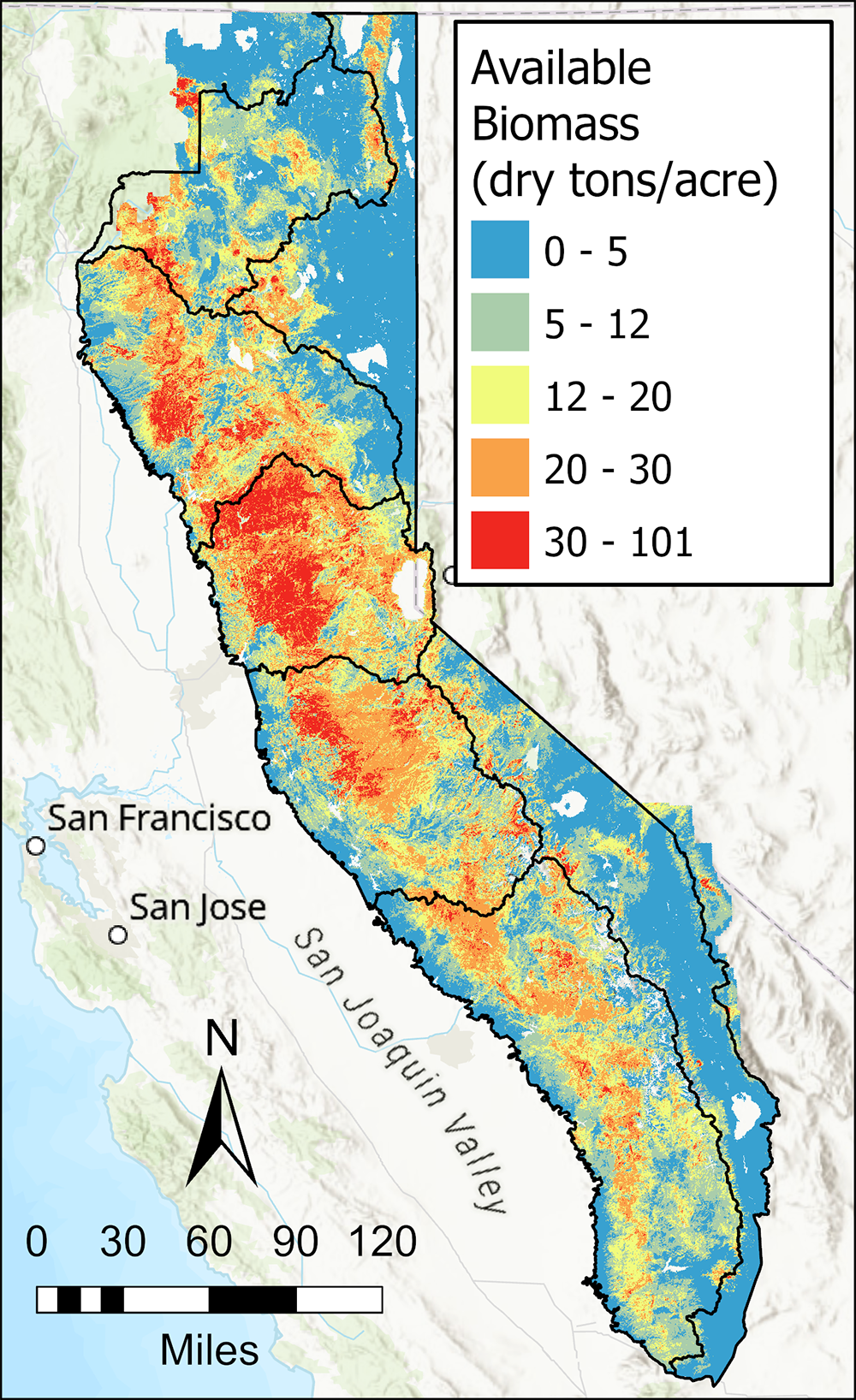Sierra Nevada Regional Profile
Economically Robust Communities

Overview
Over the past thirty years, California has lost much of its historical forest product processing capacity. The remaining sawmills and biomass facilities do not have the capacity to meet the increased salvage demand created by large-scale fires or tree mortality events, such as the 2012 – 2016 drought and bark beetle outbreak in the southern Sierra, or the Dixie fire in the northern Sierra. This lack of capacity is severely limiting stakeholders’ ability to perform both proactive forest health treatments and post-fire restoration.
Rebuilding the forest processing and products economy can bring important economic opportunities to rural communities but lack of workforce capacity is a substantial barrier. The available workforce is often limited due to a lack of affordable housing, which makes it challenging for employers to attract and retain, and because many of the jobs in the forestry and products sector are seasonal. Developing a permanent, local workforce requires access to year-round jobs with benefits and wages sufficient to support a family.
Meanwhile, tourism has emerged as the new economic backbone of many rural communities. However, this industry is increasingly susceptible to smoke events and other threats from wildfire, which can deter prospective visitors and critically shut down local business operations.
Recent efforts have focused on including communities and demographic groups which have been historically underrepresented or excluded from the forestry industry. Examples include:
- High Road Training Partnership is led by Tribes, employers, and nonprofits, and focuses on providing professional development and employment opportunities in underserved rural communities.
- Inter-Tribal Stewardship Workforce Initiative, which is tribal led and is working to develop tribal restoration workforces and advocate for Tribal and non-Tribal local contracts.
These initiatives build community and economic resilience, and they also facilitate incorporating Traditional Ecological Knowledge and practices into forest restoration.
Stakeholder Perspectives

Investments in the biomass industry are considered highly important for creating economically robust communities in the Sierra region. Similarly, investing in the timber and wood products industry are moderately to highly important to stakeholders. Training a rural resident workforce and increasing housing to support such a workforce are also supported by survey respondents. Many interviewees pointed to the lack of a residual biomass market as a barrier to completing fuel treatments; building local biomass facilities and cogeneration plants would reduce the cost of such treatments while simultaneously supporting local economies. Additionally, interviews revealed that government agencies and community-based organizations compete for contractors, because agencies lack sufficient internal capacity to conduct forest treatment work. Finally, interviewees noted that many areas in the Sierra lack not only employees with the technical expertise for forest management projects, but also administrative, grant writing, and public relation skills that are crucial for completing forest health work.
Resource Conditions
Assessing the economic robustness of communities is challenging and complex. In the Sierra, creating environmentally sustainable forest management and wood product industries are crucial for robust rural economies. The cost of potential treatments (Map A) and available standing biomass (Map B) are relevant metrics for assessing the wood product sector’s viability in an area.

The cost of potential treatments is measured as the cost per acre to harvest biomass or sawlogs, remove material from the field and transport it to a processing facility. It is important because this cost affects the financial feasibility of thinning treatments. In the Sierra, costs for treatments tend to be higher in the southern and eastern parts of the region (as high as $627 per ton) compared to the central and northern regions (as low as $213/ton).

Biomass is the total volume (tons per acre) of the crown branches and foliage and stem wood from all trees less than 10” in diameter. Total biomass is important because it represents the opportunity for utilizing biomass as a product of forest thinning.
